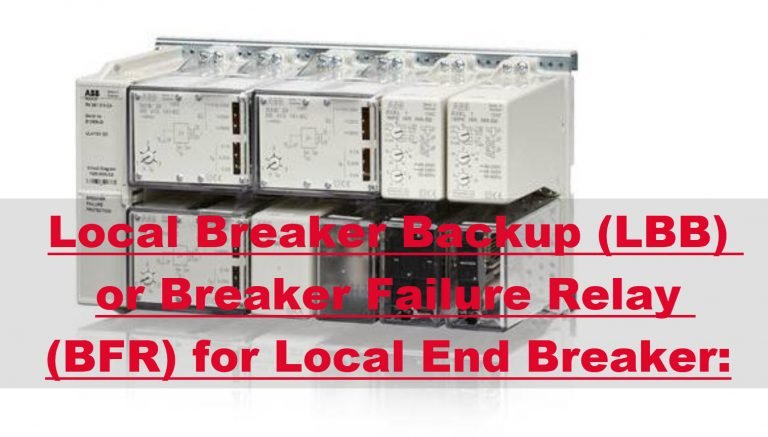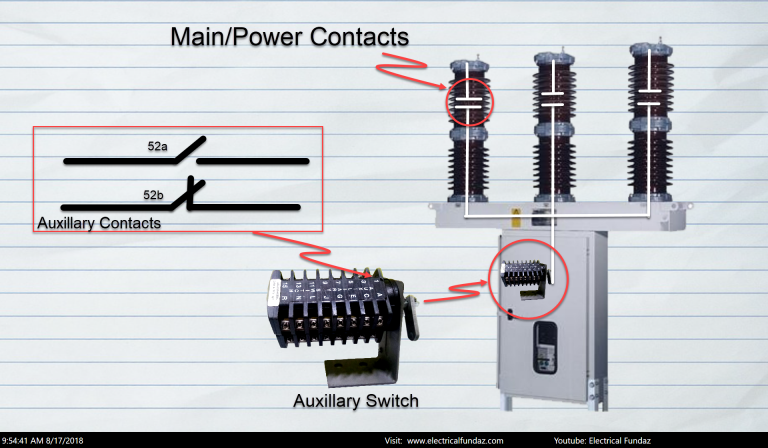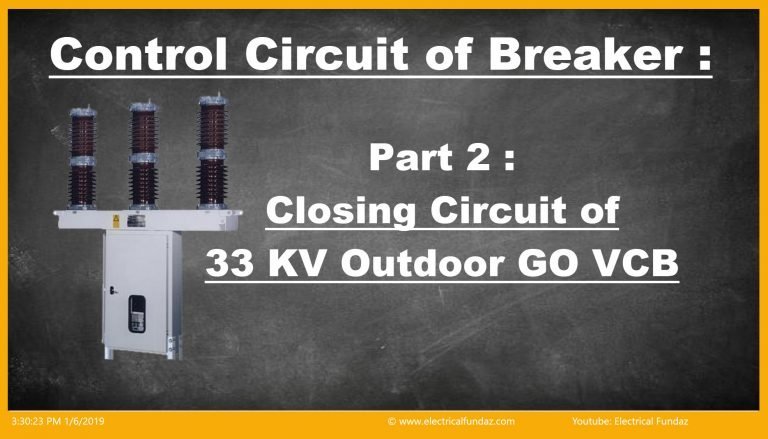A very common problem in EHV Substations, Circuit Breaker not closing Electrically. The Troubleshooting steps are as under:
Step 1: Basic Checks:
- Check the DC Supply to the Breaker. Connect the Multimeter between K1 and K2, it should show full voltage (220V/110VDC).
- Check, if the Closing Spring are charged, because an NC Spring Charge limit Switch contact is used in the Closing Circuit, so if the Closing Springs are not charged, the Breaker will not Close.
- Check if the Master Trip Relay (86) is Reset.
- Check if the TCS Circuit is Ok.
Step 2: Check if the Breaker is Closing Locally:
- Put the Local Remote Switch on Local and try to Close the Breaker through Local TNC Switch.
Lets assume that the Breaker is not Closing Locally.
Step 3: Check if its a Electrical problem or a Mechanical Problem:
- Sometimes the Breaker Mechanism gets jammed and when we try to close the Breaker, the Breaker trips immediately.
- Switch Off the Breaker DC and try to close the Breaker Mechanically.
- If the Breaker Closes Mechanically, we are sure that its an Electrical Problem.
Now, that it is clear that its an Electrical Problem, we need to check the Local Closing Circuit for any fault (Open). For the purpose of Fault Finding, we can divide the Closing circuit in two parts viz. the one after the Local TNC Switch (where we should get negative voltage) and before the Local TNC Switch (Where we should get Positive Voltage). We need to take following steps: But before starting the Troubleshooting, we need to know the Breaker Ferrules.
- DC Positive to the Breaker – K1
- DC Negative to the Breaker – K2
- Closing Positive – K5
- Closing – K21
Step 4: Checking the Circuit after the Local TNC Switch for Negative Voltage:
- We know that, a Permanent Negative is given to the Closing Coil and when the Breaker is in OFF Position, the Closing Circuit is through after the Local TNC Switch, if all the basic conditions are satisfied. If there is no break in the Closing Circuit, the negative will come through the Closing Coil till the TNC Switch. So, we will check the Voltage between K1 (Positive) and the K21 (at the C Position of the TNC Switch). If there is Voltage between K1 and K21, the Closing Circuit after TNC Switch is OK. But, if there is No Voltage, we keep checking the Negative Voltage with the Black Probe, till we get the Voltage. Please note Red Probe will be held, constant at K1 (Positive).
- Let us assume that the Closing Resistor is Faulty (Open). Red probe of the Multimeter is held at K1 (Positive) and when the black probe of the Multimeter is held at incoming of the Closing Resistor, we will not get any Voltage. When the Black probe is held at Outgoing of the Closing Resistor, the Multimeter shows Voltage. This implies that the Closing Resistor is Faulty.
Lets assume that the circuit after the TNC Switch is Ok, but still the Breaker is not Closing. So we need to check the Circuit before the TNC Switch.
Step 5: Checking the Circuit before the Local TNC Switch for Positive Voltage:
- We know that a Permanent Positive is given to TNC Switch. So, we will hold Black probe of the Multimeter, to the K2 (Negative) and Red Probe to Positive at the TNC Switch. If Multimeter shows the Voltage, this circuit is also OK.
Step 6: Checking the Local TNC Switch Closing Contact:
- Now, the only option left, is that the TNC Switch Closing Contact is faulty. To check the TNC Switch Closing Contact, we take a Shorting and short the K1 and K21 on the TNC Switch. If the Breaker Closes, the TNC Sitch Closing Contact is Faulty.
- We will check, if there is any spare contacts available in the TNC Switch. If spare contact is available, we will shift the wires K1 and K21 to it.
Step 7: Take the Remote Closing Trials:
- Put the Local/Remote Switch on Remote mode and try to close the Breaker Remotely through the TNC Switch in the RP/CP.
- If the Breaker does not Close Remotely, Fault finding can be done as was done in Local Closing Circuit in Steps 5 and 6.
Please try these Troubleshooting Steps at your Substations and let us know in comments section below.





4.5